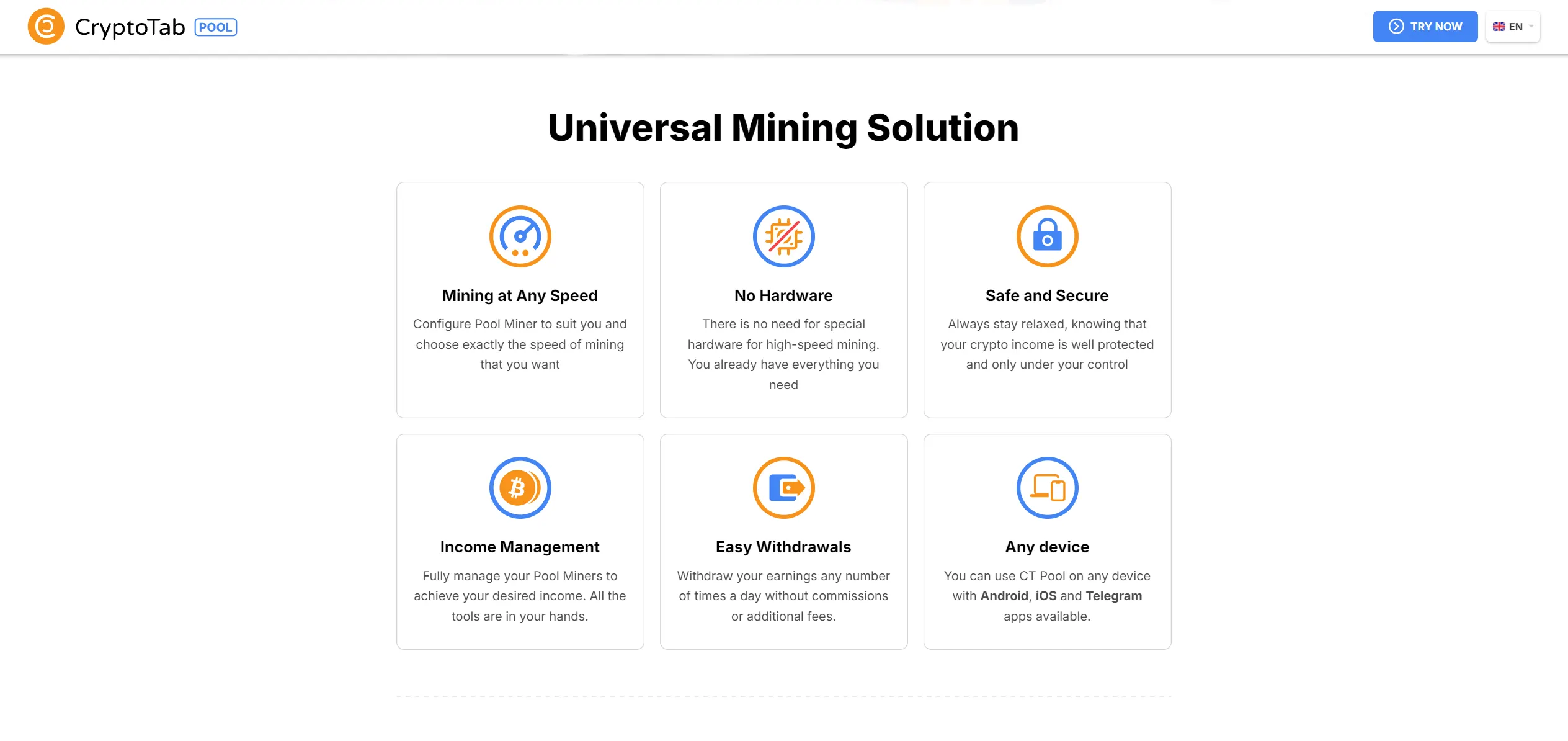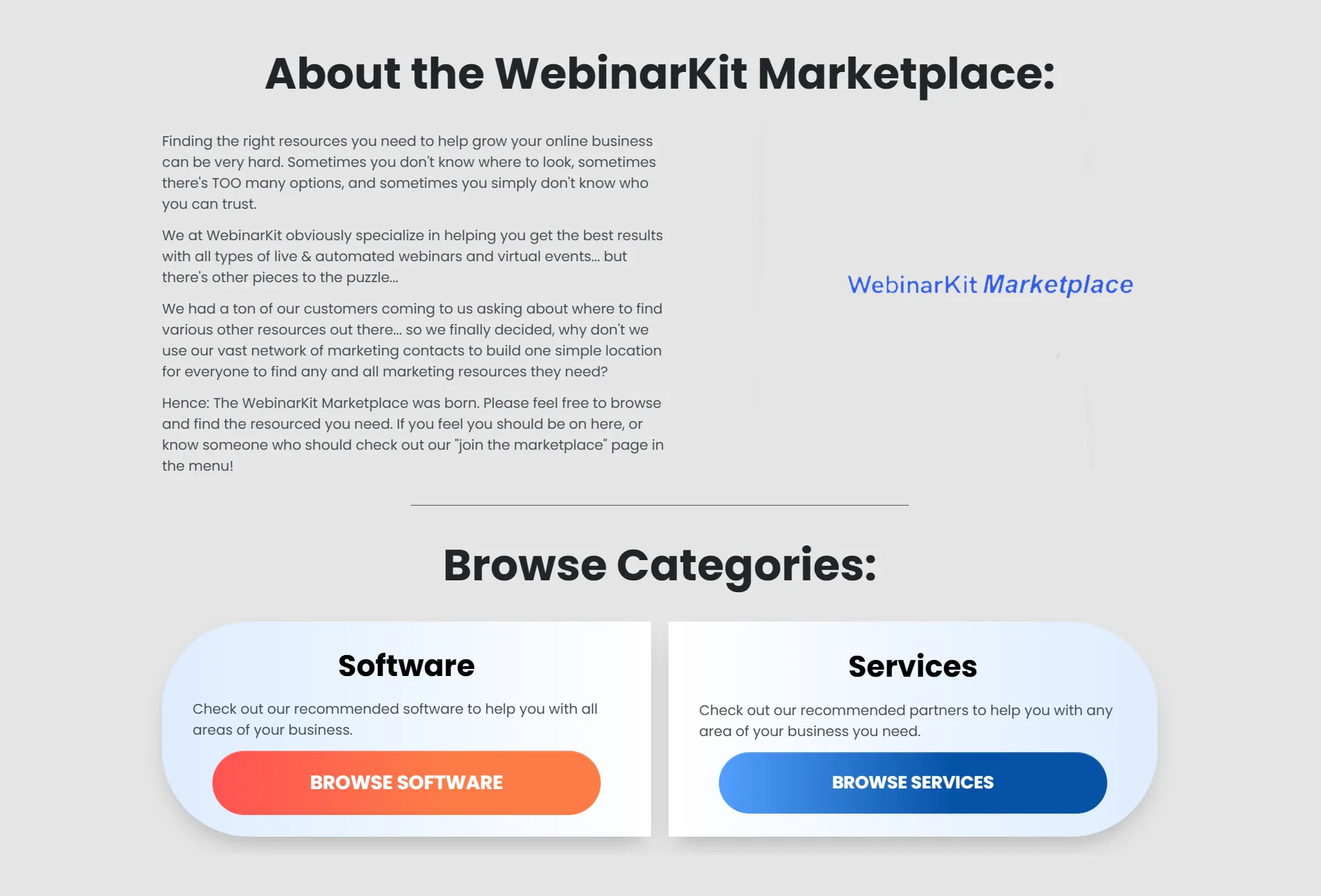Harnessing Artificial Intelligence: The New Age of Computational Power
Average Reading Time: 7min.
Table of Contents
- Introduction: The Vital Role of Computational Power in AI
- Chapter 1: The Competitive Landscape: Powering AI Innovations
- Chapter 2: Decentralization and Blockchain: Reshaping the Computing Power Landscape
- Conclusion: Embracing the Decentralized Shift
The Vital Role of Computational Power in AI
Every time I dive into discussions around artificial intelligence, I often find myself struck by one single notion: computational power. It seems to be the lifeblood of AI innovation, much like oil is central to the function of modern machinery. As I navigate through this powerhouse realm, it becomes increasingly clear that understanding the energy behind AI advancements is not just fascinating—it's essential.
Understanding the Energy Behind AI Advancements
Let’s take a moment to consider what drives the rapid evolution of AI technologies. At the heart of this technological revolution lies robust computational power, which fuels everything ranging from basic data processing tasks to complex deep learning models. It’s an exciting landscape, and during my explorations, I discovered an astounding statistic: Nvidia’s market value skyrocketed from $270 billion to over $1 trillion in just six months, propelled by the surging demand for AI capabilities. Such figures are not merely numbers; they highlight a pivotal moment in technological history—one that I believe we are privileged to be witnessing.
Download or signup now for free! Use invitation code: RXT9G9DD
When I think about the implications of such computational prowess, it’s much more than a monetary figure; it could be likened to an entire ecosystem evolving before our eyes. The advancements in AI are only achievable by harnessing intensive processing power—thus, I’d argue, computational power is indeed the new oil of the tech industry.
The Exponential Growth of Computational Needs in AI Models
The ravenous need for computational resources is particularly evident within intricate AI models. I remember reading how AI requires significantly more computational power than traditional software solutions. This staggering demand can truly reshape our expectations of technology. As I navigated the intricacies of AI algorithms, the dependency on deep learning in particular stood out to me. These models, which enhance the accuracy and efficiency of AI processes, demand exceptional computational capabilities. The exponential growth of these models calls for top-notch graphics processing units (GPUs) and specialized hardware, creating a competitive landscape among major tech companies eager to stake their claim.
Just as I highlighted earlier with Nvidia's rapid market rise, the surge in GPU demand underscores a vital point: the competition for computational power has never been more intense. Companies are pumping resources into developing powerful computing infrastructures. The more computational power a company has, the better positioned it is to lead innovations, draw insights from larger datasets, and provide more sophisticated AI products.
Real-World Applications: How Industries Leverage Computational Power
I find it incredibly fascinating how different industries harness this computational goldmine to revolutionize their practices. Take healthcare, for example. AI systems trained with copious amounts of data can detect diseases with an accuracy that surpasses human capability. Incredible! Hospitals and medical institutions leverage computational resources to create predictive models that enhance patient care and optimize treatments.
Download or signup now for free! Use invitation code: RXT9G9DD
Another industry that immediately comes to mind is finance. Once I investigated the mechanisms behind algorithmic trading, I was astonished to see how quickly wealth management strategies are evolving. Financial institutions employ sophisticated AI algorithms to process real-time data, predict market fluctuations, and make lightning-fast decisions. The enormous computational power backing these algorithms allows firms to have significant advantages in speed and efficiency.
These industries aren’t just using computation as a garnish—they're fundamentally relying on it to thrive. The advancements taking place because of it are not only fascinating, but they often redefine norms and practices that have been in place for decades.
Insights Into Future Trends
As I ponder the future, I see a few key trends emerging that will shape how AI and computational power work together. One standout is the increasing adoption of decentralized computing. Imagine the possibilities of harnessing millions of individual devices through a decentralized network! This could potentially ease strains on computing resources by tapping into users' hardware, facilitating a more equitable distribution of computational power.
In this framework, each user could contribute their computing capacity to support various applications, acting as both provider and consumer of resources. I think this sharing of computational power can drive down costs while expanding access—concepts merging technological efficiency with social equity. The prospect excites me; it opens the door to a whole new way of interacting with technology.
Technological Framework: The Fusion of AI and Blockchain
Building upon the notion of decentralized computing, I can’t help but notice the incredible synergy between AI and blockchain technologies. This combination can ensure secure, private transactions while facilitating fair distribution practices. Reflecting on how blockchain works, it's fascinating to me that its decentralization not only enhances efficiency but also safeguards valuable data. The integration of blockchain in AI-driven projects could radically alter how data integrity is maintained, fostering trust in AI systems.
Download or signup now for free! Use invitation code: RXT9G9DD
Notably, platforms are sprouting up that allow users to provide and obtain computational power freely, and they’re doing so without centralized oversight. Such developments represent a promising leap toward future technological democratization. And with smart contracts facilitating automated and self-executing agreements, the efficiency gains are more than I ever could have anticipated.
An Investment That Fuels the Future
It’s also essential to highlight that investment in computational power precipitates broader advancements across the AI landscape. The extra computational strength doesn’t merely serve the needs of individual organizations; it propels the development of the entire AI ecosystem. Strong computational capabilities lead to accelerated model training, allowing more data to be utilized effectively, which then fosters further innovations and advancements. It’s a wonderfully circular relationship between resources and creativity, and it makes perfect sense when you think about it.
"Data is the new oil, but computational power is the ignition we need to fuel AI development." - Tech Industry Expert
Download or signup now for free! Use invitation code: RXT9G9DD
This quote resonates with me, and I believe it encapsulates the state of our current technological environment. The more I explore, the clearer it becomes that computational power is vital to AI advancements and the innovative solutions that arise from them. We've reached a turning point where our future advancements will depend fundamentally on our capacity to harness these powerful computational resources.
As I weave this narrative around computational power and the implications it holds, I feel invigorated. The intertwined relationship between technological infrastructure and its applications tells a story that is evolving each day. While I embrace the current state of affairs, I can't help but be curious about what’s to come as we further unlock the potential embedded in our computational prowess.
The Competitive Landscape: Powering AI Innovations
As I delve into the ever-evolving world of artificial intelligence (AI), it's impossible to ignore the relentless competition among tech giants vying for dominance in the arena of computational resources. The landscape is charged with energy, reminiscent of a gold rush, where the 'oil' being sought is computing power itself. This is a tale not just of products but technological breakthroughs that promise to redefine our digital future.
The surge we've witnessed in the AI sector over the past few years is staggering. For example, as of May 2023, Nvidia's market value skyrocketed to a remarkable one trillion US dollars, making it the most valuable chip company globally. Just six months earlier, it was valued at approximately 270 billion—an astonishing increase driven primarily by the AI boom. This shift is a reminder of how critical computational power has become, akin to the pulse of innovation. If we take a deeper look at this phenomenon, we find a few undeniable trends.
Tech Giants Racing for Superior Computational Resources
In the race for AI supremacy, large companies are making monumental investments in infrastructure. What strikes me as particularly fascinating is the sheer scale of these investments. Major tech firms like Google, Microsoft, and Amazon are pouring billions into their AI strategies, not just for immediate returns but as long-term bets on the future of technology. According to various industry reports, it appears that the collective investment in AI infrastructure is not merely about creating products but also about securing a competitive advantage necessary to thrive in the future.
Download or signup now for free! Use invitation code: RXT9G9DD
As I reflect on my experiences within the start-up world, I see this competition up close. Start-ups often find themselves in a David vs. Goliath scenario against these giants. It’s intriguing to observe how smaller entities have devised innovative strategies to thrive in this challenging environment. They collaborate, pooling resources and research, which levels the playing field despite the overwhelming resources at the disposal of companies like Nvidia and Google.
Investment and Research: Pivotal Strategies for Competitive Advantage
The importance of robust investment strategies cannot be understated. For an AI company, it's not just about producing the next innovative solution; it's about the relentless pursuit of computational efficiency. I remember my first experience presenting an AI project to investors. The questions weren't merely about the technology but focused heavily on our computational capacity—did we have the necessary infrastructure? Could we compete with the likes of Google or Amazon?
This emphasis on investment is reflected in the astonishing amount of data. Major companies are investing billions annually into AI infrastructure, showcasing the realization that the computational power they can harness significantly impacts their market standing. As AI continues to evolve, the need for research into better algorithms and computational techniques becomes crystal clear. The goal is to create systems that can handle vast amounts of data without faltering. It's a ripple effect—those who lead in computing resources will lead in AI.
Download or signup now for free! Use invitation code: RXT9G9DD
As an anecdote, I once participated in a joint hackathon with several tech start-ups targeting a community of developers. What stood out was the sincere collaboration between companies, sharing their resources to optimize performance. In sharing these assets, our goal wasn’t just to win the event but to innovate in ways that stretched beyond individual success—as if we were nurturing a budding ecosystem of collective intelligence.
The Innovations of Artificial Intelligence: Shaping Tomorrow
Engaging with this technology brings me to consider one critical question: How is the pursuit of computational power driving advancements in AI? The answer is multifaceted. For starters, computing power is essential for training AI models, particularly in fields such as deep learning. With countless data points being fed into a system, the performance and accuracy of these models depend significantly on the resources available. To put it simply, without adequate computing power, AI models cannot reach their full potential.
This sheer necessity has sparked a broader dialogue within the tech community about what it means to innovate under pressure. It’s akin to witnessing a birth in the digital era, where ideas emerge from the crucible of competition. I find it fascinating how companies leverage powerful computational capabilities not just to enhance processes but also to unlock new possibilities in AI development. The implications of these advancements stretch far beyond the realm of technology—it speaks to the larger narrative of who gets to drive the future.
Personal Reflections: A Journey through the Start-up World
Reflecting on my journey through the start-up landscape, I have seen firsthand how partnerships can create pathways to success where the competition seems daunting. The spirit of innovation often thrives in collaborative environments. I participated in a project—an AI-powered application designed to streamline logistics operations. Initially, we operated with limited computational resources, and it was tough. We often had to navigate through bottlenecks that our larger competitors wouldn’t even notice.
However, through ingenuity and a shared vision, we pooled together computing resources from various small tech firms. This strategy not only enhanced our performance but also underpinned a sense of community among us. It emphasized that in this fierce race for supremacy, alliances might be just as important as the technical capabilities we could develop.
Download or signup now for free! Use invitation code: RXT9G9DD
"In the world of AI, it’s not just survival of the fittest; it’s survival of those with the most computing power." - Industry Analyst
This quote echoes the importance of resource allocation in shaping the competitive landscape of AI. There’s an undeniable truth that as companies innovate, they must also be shrewd in utilizing their resources to create value effectively. The ongoing arms race for processing power is not only strategic—it's essential for long-term viability in an industry that is growing exponentially.
The Future: An Interconnected Landscape
As I step back and analyze the road ahead, I can't help but sense that the synergy between AI and blockchain technology holds promise for future innovations. The concept of decentralization, where users can contribute computing power through their own devices, removes the barriers that once confined innovation to the realms of larger corporate infrastructures. It’s a refreshing perspective that speaks to our evolving technological ecosystem, ensuring a fair distribution of resources and opportunities.
This decentralized architecture could very well transform the dynamics of resource sharing in AI. Enabling a computing power-sharing platform through blockchain ensures security, privacy, and efficiency—a trifecta that could reshape the very fabric of technological collaboration. Imagine a workspace where any individual could lend their computational power safely, contributing to the continued evolution of AI without the bureaucratic hurdles traditionally associated with large institutions.
Download or signup now for free! Use invitation code: RXT9G9DD
The rise in this power competition illustrates how pivotal computational resources are in enhancing the entire AI ecosystem. Organizations are not merely competing on the basis of algorithms but are investing heavily in robust infrastructures that allow them to dominate in this fast-paced world. As the tech landscape grows more intertwined, I’m eager to witness how this race unfolds and transforms our expectations of innovation, connectivity, and collaboration.
Decentralization and Blockchain: Reshaping the Computing Power Landscape
The digital landscape has undergone a seismic shift, particularly in the context of artificial intelligence (AI). As I've delved into the current trends and technologies, I've come to realize that decentralization, coupled with blockchain technology, is fundamentally reshaping the way we approach computing power. The implications of these developments are profound, and they promise to democratize access to computational resources in ways we haven't seen before.
The Shift from Centralized Systems
For years, we've been accustomed to a world dominated by centralized systems—platforms owned by large corporations wielding tremendous control over the distribution and utilization of computing power. However, this model often created barriers to entry for smaller players and limited collaboration among enthusiasts and innovators. In this evolving landscape, the shift toward user-powered resources is not just a trend; it represents a monumental change that could level the playing field.
Download or signup now for free! Use invitation code: RXT9G9DD
Imagine a scenario where individuals equipped with personal devices contribute their share of computing power. This isn't a sci-fi dream but rather a rapidly approaching reality driven by decentralization. By allowing ordinary users to lend their devices to the greater good, we can create a collective computing powerhouse that transcends the limitations of centralized entities.
The Role of Blockchain in Computing Power Sharing
Now, let’s take a closer look at how blockchain technology enhances this shift. In my explorations, I've discovered that blockchain serves as a secure framework for facilitating computing power sharing. Traditional models rely heavily on trust, which can lead to vulnerabilities and exploitation. Blockchain, however, introduces transparency and accountability, thereby enhancing security.
"Decentralization is the key to unlocking the full potential of AI; it allows everyone a seat at the table." - Blockchain Pioneer
Download or signup now for free! Use invitation code: RXT9G9DD
This quote resonates with me because it encapsulates the essence of what decentralization offers. By utilizing blockchain, we can ensure that users are compensated fairly for their contributions, and that the rules governing resource allocation are enforced equitably. Smart contracts embedded within blockchain protocols can automate these processes, preventing disputes and ensuring smooth transactions.
Bridging the Gap Between Users and Technology
When I think of the AI computing power oil field adopting decentralized architecture, I'm excited about the implications for innovation. It allows users to harness their devices—be it computers, gaming consoles, or even mobile phones—to provide computing power. This shift means that anyone with a device has the chance to contribute to groundbreaking AI research and development, which was previously reserved for the well-funded giants of tech.
For instance, let’s consider a hypothetical scenario: what if a child with a tablet could contribute to the advancement of an AI model merely by playing games? Through a decentralized network, the power they provide could aid in training AI, creating a scenario where participants of all ages and backgrounds have the ability to impact the tech landscape significantly.
A Fairer Distribution of Computational Resources
One of the most exciting aspects of this decentralized architecture is its potential for a fairer distribution of computational resources. In my opinion, this democratization of AI could not only boost innovation but also allow underrepresented communities to participate in the tech revolution. No longer will access to advanced technology be a privilege of the few; instead, many can contribute, creating a vibrant ecosystem of shared innovation.
Download or signup now for free! Use invitation code: RXT9G9DD
Privacy and Security in Decentralized Systems
A critical concern when forging ahead with decentralized models is how to secure user data and maintain privacy. This is another area where blockchain shines. Each transaction involving computing power can be securely logged on a blockchain, ensuring that sensitive information remains untouched while offering a trail that enhances accountability. As I've examined these technological advancements, I find comfort in knowing that proponents of AI can work tirelessly to ensure a secure environment that maintains user confidentiality.
The Future of AI Computing Power
As we look forward, I envision a myriad of applications that leverage decentralized computing power. Industries ranging from healthcare to finance will benefit from innovative AI solutions that are not just efficient but also ethical due to their inclusive frameworks. The old paradigm of power being concentrated in a few hands is fading, giving way to a robust eco-system where innovation is a shared endeavor.
Download or signup now for free! Use invitation code: RXT9G9DD
Moreover, I believe that as the technology matures, we will witness the emergence of platforms dedicated to computing power sharing. These platforms will facilitate seamless interactions between users looking to share their resources and those needing additional computational power for their AI-driven projects. It’s an exciting world where collaboration drives technological advancement.
Conclusion: Embracing the Decentralized Shift
Having explored the potential of decentralization and blockchain within the realm of AI, I feel both hopeful and energized about the future. The shift from centralized systems to user-powered resources is not merely an abstract idea; it’s a tangible reality we are on the brink of realizing. The ability for countless individuals to contribute to AI advancements using their devices is nothing short of revolutionary.
As I continue to observe the rapid advancements in technology, I remain eager to see how these decentralized approaches will redefine not only computing power sharing but also the very foundation of how we engage with artificial intelligence. We are standing at the forefront of a new era, and it's exhilarating to think about the possibilities that lie ahead.
For more information on StarCoin, you can check out the following URL:
- Website: https://starcoin.one
Download or signup now for free! Use invitation code: RXT9G9DD
P.S. Don't forget to follow us on social media, the community, the website and the - - YouTube channel for even more inspiration and updates!
- Website: https://thecryptoshed.cc
- Website: https://van-santen-enterprises.com
- Community: https://community.thecryptoshed.cc
- Marketing Courses: https://thetraininghub.cc
- The Store: https://van-santen-enterprises.cc
- YouTube Channel: @VanSantenEnterprises
To Learn more about "Digital Marketing" or to stay informed, subscribe to the free newsletter or community.
TechnologyInnovation, #Blockchain, #ArtificialIntelligence, #DecentralizedArchitecture, #ComputationalPower, #StarNet, #StarCoin, #StarCoinCrypto
TL;DR: The transition from centralized systems to decentralized architectures, powered by blockchain technology, is reshaping the AI computing landscape, enabling widespread access and participation. This democratization of computing power ensures equitable resource distribution, enhances security through smart contracts, and fosters innovation for a more inclusive future.




















































